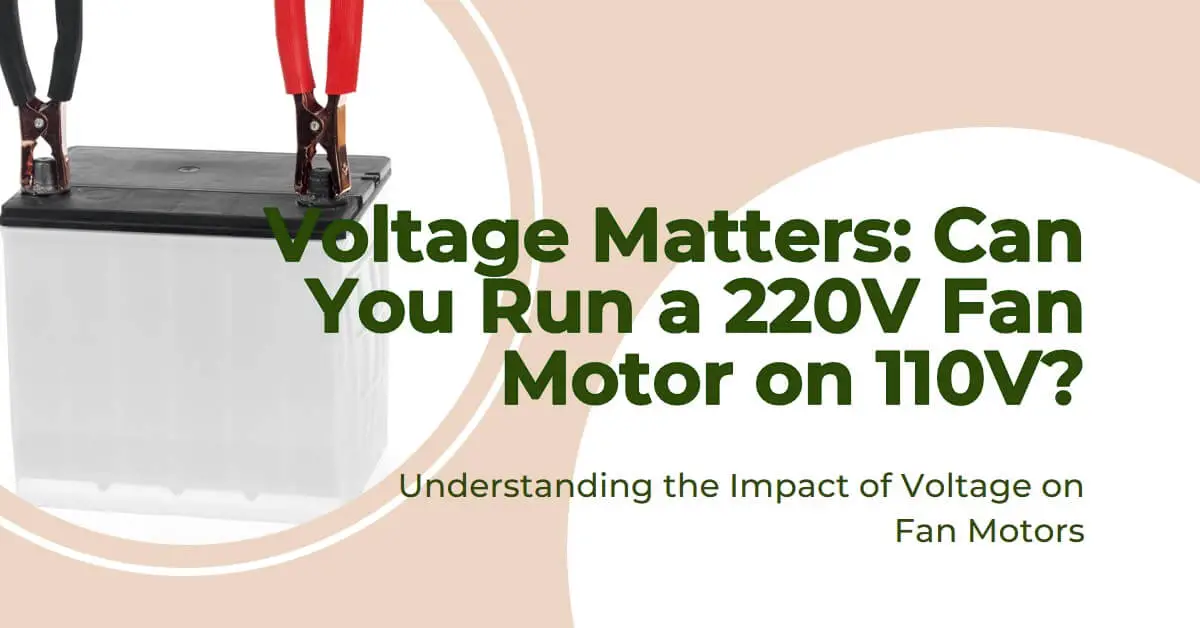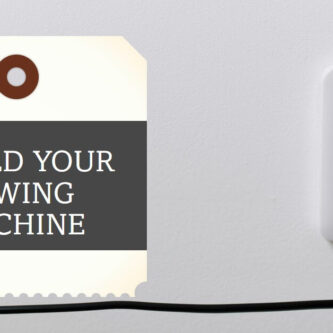Image: “Article Feature Image” by Bing is licensed under CC BY-NC-SA 4.0. Source: Bing Graphic Art. License: CC BY-NC-SA 4.0.
Electric motors play a crucial role in various applications, from powering industrial machinery to driving household appliances.
Understanding the voltage requirements of motors is essential to ensure their proper functioning and prevent potential damage.
I have found a good question, can you run a 220v motor on a 110v supply? the short answer is, No, it is not advisable to run a 220V motor on a 110V power supply. The lower voltage supply can lead to potential overheating and burnout.
This article explores the possibility of running a 220V motor on a 110V power supply, discussing the associated risks, necessary modifications, and alternative solutions.
Understanding Voltage Ratings
Voltage rating refers to the specific electrical voltage required to operate a motor safely and efficiently.
Motors are designed and manufactured with a specific voltage rating in mind, and deviating from this rating can lead to performance issues and potential damage.
Matching the voltage rating of a motor with the available power supply is crucial for optimal operation.
Can I run a 220v motor on a 110v
Operating a 220V motor on a 110V power supply is not recommended due to several risks and limitations.
The lower voltage supply is insufficient to meet the motor’s requirements, leading to decreased performance, increased current, overheating, and potential damage.
This can result in reduced motor efficiency, possible damage to internal components, and even safety hazards.
It is essential to consider alternative solutions, such as modifying the motor or using a step-up transformer, while consulting with a professional to ensure safe and efficient operation.
Let’s break this down,
Attempting to run a 220V motor on a 110V power supply can present various challenges and risks.
However, in certain cases, it may be possible to modify the motor or use additional equipment to accommodate the lower voltage.
Risks and Limitations of Running a 220V Motor on 110V
Running a 220V motor on 110V can have several negative consequences:
- Decreased motor performance: The reduced voltage supply results in a significant reduction in the motor’s power output, leading to slower rotation speeds and diminished torque. The motor may not be able to perform its intended tasks effectively.
- Overheating issues: Operating the motor at a lower voltage can cause it to draw more current to compensate for the reduced power. This increased current flow can lead to overheating, potentially damaging the motor’s internal components.
- Increased current draw: The lower voltage supply forces the motor to draw more current to maintain its operation, potentially exceeding the capacity of the power supply or wiring. This can lead to tripped circuit breakers or blown fuses, posing a safety hazard.
Read also my article: Can a 220v Fan Motor Run on 110v? Exploring the Possibilities.
Required Modifications
To run a 220V motor on 110V, certain modifications may be necessary to ensure safe and efficient operation. These modifications can include:
- Changing motor windings: Rewinding the motor’s coils to reduce the number of turns can help match the motor to the lower voltage supply. This process requires expertise and should be performed by a qualified professional.
- Adjusting motor components: Some motor models may have adjustable components that allow for voltage adaptation. Consult the motor’s documentation or seek professional advice to determine if adjustments are possible and how to proceed.
- Understanding compatibility issues: It’s important to consider the compatibility of other motor components, such as capacitors and auxiliary devices. These components may need to be replaced or adjusted to ensure proper operation at the lower voltage.
For more information read also my comprehensive article: Is Voltage Drop Killing Your Refrigerator? Here’s What You Need to Know
Using a Step-Up Transformer
One alternative solution to running a 220V motor on 110V is to use a step-up transformer.
A step-up transformer increases the voltage from the power supply to match the motor’s requirements. Here are some key points to consider:
- How a step-up transformer works: A step-up transformer consists of primary and secondary windings that are designed to increase the input voltage. By connecting the 110V supply to the primary winding and the motor to the secondary winding, the transformer provides the necessary voltage boost.
- Determining the appropriate transformer: The selection of a suitable step-up transformer depends on factors such as the motor’s voltage rating, power requirements, and the available current from the power supply. Consulting an electrical professional is advisable to ensure the correct transformer is chosen.
- Installation and safety considerations: Proper installation of the step-up transformer is critical to ensure safe and efficient operation. It is essential to follow all manufacturer instructions, comply with electrical codes, and consider factors such as insulation, grounding, and protection against overcurrent or short circuits.
Consulting with a Professional
Running a 220V motor on 110V involves electrical modifications and potential safety risks.
Therefore, it is highly recommended to consult with a qualified electrical professional before attempting any modifications or alternative solutions.
A professional can assess the feasibility of running the motor on a lower voltage, identify potential hazards, and provide guidance on the best course of action.
Conclusion
Running a 220V motor on a 110V power supply poses several risks and limitations due to the mismatched voltage requirements.
The motor’s performance may be significantly reduced, and overheating and increased current draw can damage the motor and the electrical system.
However, with appropriate modifications or the use of a step-up transformer, it may be possible to accommodate the lower voltage.
Safety should always be a priority, and consulting with a professional is strongly advised to ensure proper operation and compliance with electrical codes and regulations.
you work With Electricity! Don’t leave empty-handed!
Looking to stay ahead of the game in the world of electrical engineering? Subscribe to my YouTube channel and gain access to exclusive content you won’t find anywhere else!
The staff I recommend (Amazon Affiliate Links to products I believe are high quality):
- Economy 120 Volt/60Hz AC Power Source – Step-Down Voltage & Frequency Converters 1800W
- UNI-T Digital Multimeter Tester UT139C
- 50-Amp Extension Cord for RV “100ft”
- Voltage Stabilizer 110/220v
- Hair Dryer “best selling“
- TOSHIBA EM131A5C-BS Countertop Microwave Ovens
Disclaimer: This contains affiliate links to Amazon products. I may earn a commission for purchases made through these links.


